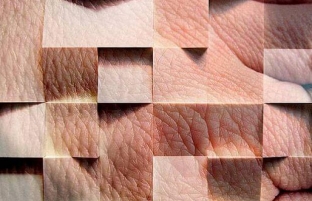There are many myths about the benefits and dangers of sunlight. It is worth understanding for yourself how to sunbathe correctly with the greatest benefit without harm to health and no longer succumb to delusions. The effect of the sun on the skin is so diverse that it is difficult to distinguish where the line between tangible benefits and significant dangers lies. Ultraviolet rays trigger many processes necessary for normal functioning: the synthesis of vitamin D for the absorption of calcium, the production of serotonin, and the stimulation of cell regeneration in the treatment of acne. Ultraviolet has the same negative effect on the body: exposure to the sun on the skin destroys collagen and triggers premature aging of the skin, provokes skin cancer. Yes, how to properly organize your holiday in the sun and what misconceptions need to be dispelled about tanning,
The effects of the sun on the skin: truths and myths about the sun and tanningMyth #1 – Protective products with a high SPF factor provide 100% UV protection
This is a delusion, cosmetics, even with the highest rating, do not always protect 100 percent from the penetration of sunlight into the deeper layers of the skin. Cream or emulsion with SPF contains filters that can reflect, scatter or absorb rays. The number next to the SPF indicates the degree of skin protection, and here you should figure out what these numbers actually mean.
Read also: How to sunbathe properly: the rules of being in the sun
SPF 10, 15 or 50 – the difference between these indicators is the duration of the tool and its filters.
To find out how much this product will protect the skin from radiation, you need to multiply the numbers next to the SPF by the time after which your skin begins to turn red in the sun without cosmetics with protective filters.For example: Your skin starts to redden rapidly in the sun during tanning after 10 minutes of exposure to direct rays. With SPF20 on a jar of cream, you can calculate the duration of cosmetics: 10 * 20 \u003d 200 minutes or a little more than 3 hours. This formula reveals the duration of action of a cosmetic product with a protective factor specifically on your skin. But besides this, the correct application and the amount of the product also affect the effective protection of the skin with filters.
Apply up to 2 tablespoons of sunscreen to the body and 1 teaspoon to the face. Remember: this should be done 30 minutes before sun exposure so that the product has time to be absorbed.Sweat, bath time, and toweling also greatly reduce the effect of protective filters. In this case, immediately after water procedures, it is necessary to renew the product on the skin.

It doesn't matter what color your skin is, if you stay in the sun for a long time, you can get burned and get skin cancer. Even dark skin can be damaged by ultraviolet radiation and age prematurely: it becomes thinner, dry and flabby, wrinkled and spotted.
Melanocytes are responsible for the color of the skin, producing pigment –Myth #3 – On a cloudy day, there is no need to protect the skin, because there is no direct sunlight
Read also: What should be sun protection for skin, eyes and hair?
In summer, even on a cloudy day, the sun's rays can penetrate the skin and cause harm. Therefore, even when going outside for 30 minutes, apply a protective cream on the face and exposed skin. It is possible to get sunburned in too bright a winter, and skiers confirm this fact that the bright sun on the snow can do as much harm as the sun on the beach near the water or in a big city.

Specialists say that any type of tanning is already unsafe in itself. Even in a solarium, you can get burned and start premature skin aging. It is especially dangerous for teenagers to visit solariums, because at this age it is most likely that they will not guess the necessary time and burn out.
Scientists say that after a 3-time burn, the chances of developing melanoma increase every year. Therefore, choose your time to visit the solarium carefully, be sure to apply a protective cream against UV radiation and moisturize the skin after tanning.
Any exposure to the sun on the skin must be accompanied by precautions. It is worth remembering that it is better not to go outside from 12 pm to 4 pm due to aggressive radiation. Also, people who have






Add a comment